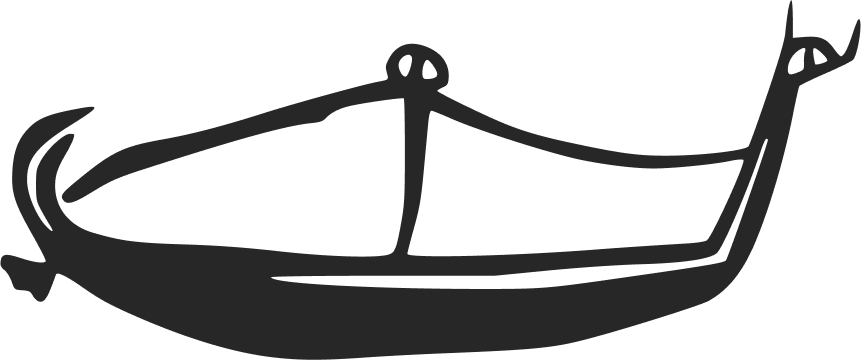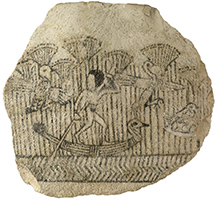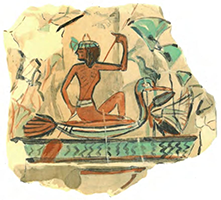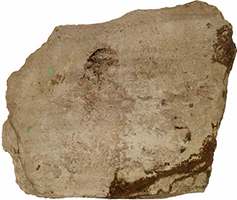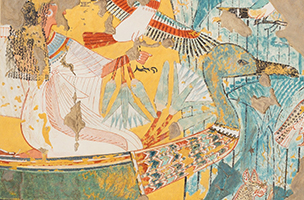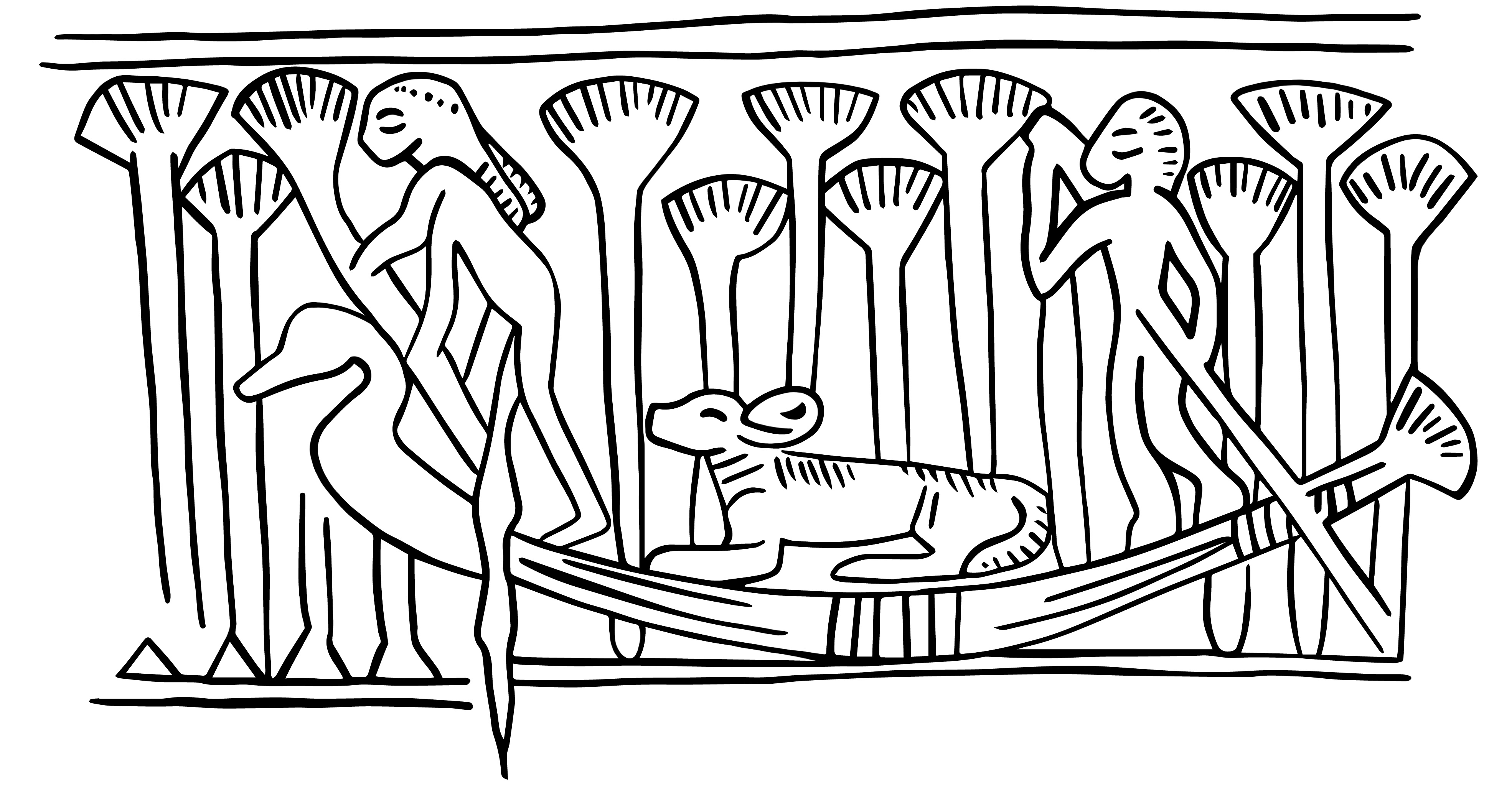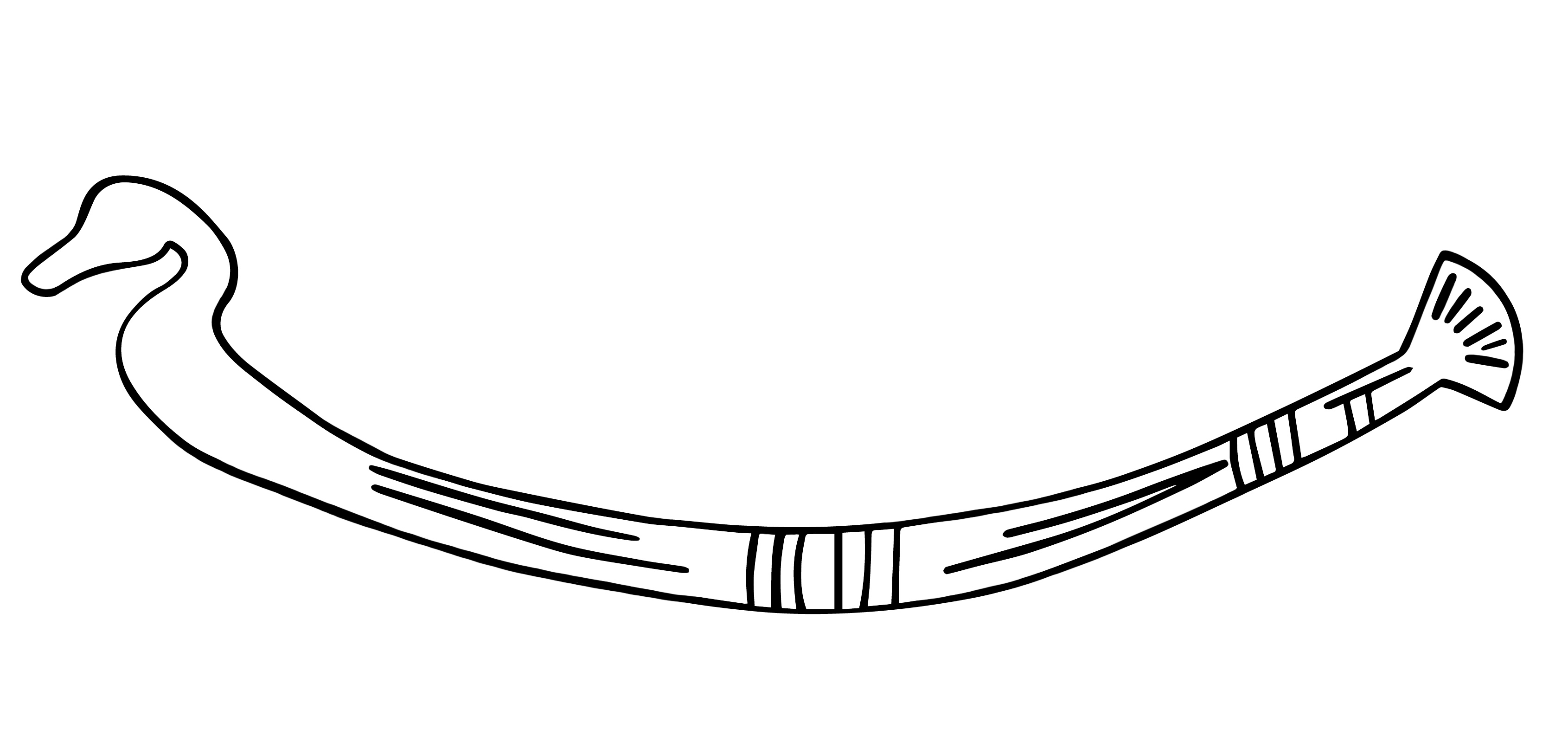Shallow crescentic hull with an s-shaped stem ending in a naturalistic outward-facing bird-head. Stern ending in an open papyrus umbel. Lines along the hull indicating a craft made of papyrus, with a series of vertical lines at the stern and amidship meant to denote lashings.
gold and silver bowl
M10
Reign of Ramesses II (1279-1213) or Merenphtah (1213-1203)
Tell Basta, near the temple of Bastet
bowl diam: 19 cm; diam. of cone: 3.6 cm
Silver bowl with gold rim, fragmentary. Chased and repoussé decoration on the interior of the wall. The bowl originally had an omphalos covered by a gold cone in the center of a recessed base.
Egyptian Museum, Cairo JE 39884.10, SR 1/7789
Lilyquist 2012: 17, 24-27, 38-39, figs. 26, 42
Assemblage: The second of two assemblages found not far from each other, a little further from the temple, in a spot that was otherwise nearly devoid of finds. Beneath it were traces of burning, while a limestone block and a smaller stone with a fragmentary inscription were found nearby. The silver objects were stacked at the top, while the more precious gold artefacts were below. The bottom of the assemblage included two chased gold jars, two lapis-inlaid gold bracelets inscribed for Ramesses II, two pairs of gold ear studs, gold and carnelian beads, a long gold clasp, eight silver bowls (two of which with gold rim were inscribed for Amy and Ameneminet respectively), and three silver strainers. Above these was a collection of siler jewellery of Near Eastern character, parts of strainers and bowls, as well as scrap that indicates a metalsmith’s hoard. The intact jewellery, of royal workmanship, is thought to have been given to the temple treasury by a king or an official while the vessels have been interpreted as part of a temple treasury used for drinking celebrations (Lilyquist 2012: 14, 17). The vessels are understood as a wine drinking set, with shapes matching examples depicted in tombs and temples: pouring jugs, jars and flasks for mixing, strainers for sediment removal, bowls, situlae and goblets for drinking. Their use in a temple or shrine context is further indicated by references to protection and vitality from major goddesses such as Hathor, Neith, Bastet, Anat, and Astarte (Ibid: 33). A number of elements of the treasure point to connections to the Levant and immigrants from the region, such as the use of wine, the nature of the silver jewelley, and the indication that all of the named owners had international connections.
Ameneminet: An important official with numerous titles including “attendant,” “follower of the king in foreign lands,” “royal envoy abroad,” “royal herald,” “scribe of correspondence of the king,” “treasury chief,” “chief of works,” “high steward of the king,” and the honorific “royal fanbearer.” Otherwise known from his large tomb at Saqqara and a statue, this official had Asiatic connections, having been “sent in commissions in every land.”
Bowl: Bowl inscribed as belonging to Ameneminet, “royal scribe of correspondence of the Lord of the Two Lands.” His name translates as “Amun in the Valley,” which is a reference to Thebes – the center for worship of the god Amun. The inscription at the bottom of the bowl has been translated by Kitchen (Lilyquist 2012: 24, n.96):
Reading right to left: “Long live your spirit, and your countenance, with life and prosperity! May you see Him who presides in Hesret, you being kept safe with [or in] a good lifespan . . . joy; for the spirit of the Royal Scribe Amenemone [Ameneminet], justified . . .”
Reading left to right: “Long live your spirit, and your countenance, may you be drunk every day, (and) may you see the Lords of Thebes; for the spirit of the unique(ly) excellent one, beneficial for his lord, the Royal Scribe of Correspondence of the Lord of the Two Lands, Amenemone, justified . . .”
Decoration: The freeze along the upper register of the bowl shows a marsh and agricultural scenes, while the lower register depicts desert animals (a lion, bovids, a feline pouncing on a bovine) and composite plants. The upper register depicts a continuous band of tuftlike papyri, with various activities which do not always belong to a marsh setting such as milking, grape treading, and the goddess of the harvest, the cobra Renenutet. The rich iconographic repertoire includes horses, leaping bovines pursued by a man with a yoke, a cow being milked, a calf and a man, a kneeling woman holding a hand trap for catching songbirds, a man transporting something on a yoke while pursuing three calves, three men pulling a clap-net, a man carrying birds, a man filling a wine jar, four men grasping ropes for support while treading grapes in a vat of wine, a large cow resting among the papyri, a man carrying a bag behind a man with an elaborate net, two women filling wine jars next to a fishpond, a man gathering papyrus from a boat ferrying two ducks in an enclosure with hanging fruit, and a boat with a goose-headed figurehead poled by two nude figures while carrying a recumbent calf.
Lilyquist , C. 2012. “Treasures from Tell Basta: Goddesses, Officials, and Artists in an International Age.” Metropolitan Museum Journal 47.1: 9-72.
